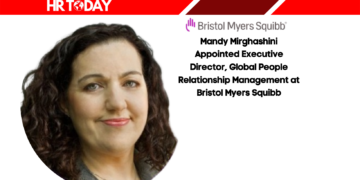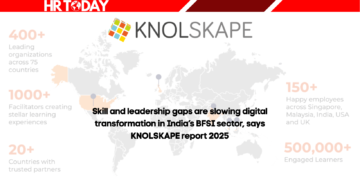In the rush to decode how AI is “disrupting” PR, we’ve missed a fundamental truth: AI is not the story. It’s the new medium. Just as print gave way to television and television to digital, AI is not just a tool; it is the new terrain. Public relations professionals must stop reacting to it and start learning how to narrate within it.
I’ve been in communications long enough to remember a time when a brand’s entire image could be shaped by one cover story or a double-column city brief. The gatekeepers were fewer, the timelines longer, and the feedback loops polite. Today, in an AI-enabled world, the rules are different. They are invisible, constantly evolving, and predictive.
This Isn’t About Chatbots Anymore
Let’s not reduce the conversation to content automation. Yes, generative AI can draft a press release or summarize coverage. But the deeper shift is cognitive. AI can now anticipate public reaction, simulate sentiment, and even identify reputational risk before it makes the news. This changes how we plan. It demands that we develop not just campaigns, but contingency mindsets.
AI has made PR immediate. There is no room for ‘wait and watch’ anymore. If your narrative isn’t ready, someone else’s version will be.
In such a high-velocity ecosystem, communication must become more agile, scenario-based, and ethically conscious. The stakes are not just brand perception but societal impact. PR practitioners must now be adept at scanning AI-derived insights and making human sense of them, turning noise into narrative.
In HR functions especially internal communications and employer branding, AI tools are already helping decode employee sentiment, predict disengagement trends, and even flag potential culture risks. But while AI can highlight the signals, it is still up to HR and communication leaders to craft responses that are authentic, timely, and human-first.
The Real Skill Gap: Framing, Not Writing
A common fear among professionals is whether AI will take over writing. But writing isn’t what makes a PR strategist truly valuable. Framing is. Knowing what to say, when to say it, and how to contextualize it for diverse audiences remains a uniquely human skill. No tool can understand cultural nuance like someone who has lived through a crisis, defended a reputation, or witnessed a boycott unfold on social media overnight.
In fact, in a sea of AI-generated sameness, the PR professional who can bring clarity, restraint, and emotional intelligence will stand out more than ever. We must learn to guide the tools, not be guided by them. Our edge lies in our ability to listen deeply, to observe silences as much as sounds, and to build messages that not only inform but resonate and endure.
Empathy, intuition, and lived experience cannot be programmed. These are the foundations of good judgment, which remains the most critical skill in high-stakes communication.
This shift has major implications for L&D and HR strategy. As AI takes over repetitive writing tasks, organizations must upskill communicators and people managers in framing, emotional intelligence, and ethical storytelling. These are the differentiators AI can’t replicate.
Let’s Talk About Trust
There is a bigger undercurrent here that isn’t talked about enough. Trust is being redefined. In the age of deepfakes and algorithmically generated virality, public trust is no longer based on visibility or repetition. It is built on consistency, transparency, and vulnerability. These are not values that AI can replicate. It is our job not only to build reputations but also to humanize them. Every brand will eventually use AI. The ones that will be trusted are the ones that are open about it and show exactly how they do. Trust must now be designed into communication strategies from the start—not retrofitted after damage is done. Proactive reputation building will be as important as reactive crisis management.
We’re entering a landscape where realness is a differentiator. The more ‘perfect’ something looks online, the more people question it. PR must shift from creating polished narratives to fostering honest, ongoing dialogue.
For HR leaders, this means designing trust not just into external messaging, but into everyday employee experiences from transparent policy communication to how AI tools are introduced in the workplace. If trust is broken internally, it inevitably reflects externally. AI must therefore be integrated in a way that respects employee dignity and organizational values.
The Brief Is Changing
At Konnections IMAG, we’ve started rethinking the PR brief itself. It is no longer just about messaging. It is about message governance understanding how a narrative travels, mutates, and survives across platforms influenced by AI. We now design for platforms we don’t fully control, using tools that adapt in real time. That is both daunting and exciting.
It also calls for closer collaboration with data scientists, ethicists, and platform engineers. The future of PR will be interdisciplinary, and communicators who can work across boundaries without losing the essence of human connection will lead the way. HR teams must start thinking about how cross-functional collaboration shapes org design. Embedding communication strategists alongside data teams ensures messages are not only data-informed but also culturally relevant. This is the kind of integrative thinking the future workplace demands.
This reminds us that we are no longer just storytellers. We are narrative architects in a new cognitive landscape.
Final Thought: Let’s Be the Professionals AI Can’t Replace
PR is a field that has always adapted. From faxes to reels, from embargoed press notes to live Twitter threads, we’ve evolved because we understand people. That is our enduring skill.
This isn’t about fighting AI. This is about embracing a more intelligent way to be human and ensuring our brands do the same.
Because in the end, AI may shape the message, but it will always be our job to make it matter.
Read Also : When HR “Produces Nothing”: A Response to Jennifer Sey’s Anti-HR Vision
The Fine Balance: Navigating Work, Life, and Mental Wellbeing
Mind the Leadership Gap – From Learning to Real-World Impact
How the Adecco Group is empowering its employees for the future of work












